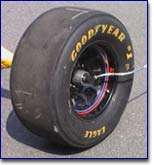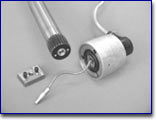Internal Gaging of Solid Axles

Teledyne LeCroy Test Services now offers torque-sensing solid axles through use of internal strain gaging technology.
The strain gages are installed on the ID of a 3/8 or 1/2-inch diameter hole drilled along the shaft axis from the outboard end of the shaft. A Lemo connector is positioned at the end of the shaft. This allows the user to connect the instrumented axle to a slip ring or telemetry device in order to obtain a responsive and accurate torque signal.
Why internal gaging?
Conventional gaging of the shaft OD requires cross drilling of the axle in order to route the gage wires out to the wheel. The cross drilled hole weakens the shaft and often can lead to torsional failure under normal loading conditions. Elimination of the cross-drilled hole leaves the load carrying capacity of the shaft nearly unchanged.

A second benefit derived from internal gaging is that the strain gages are not exposed to differential oil. The gages are mechanically protected by the shaft, thereby providing a more robust and reliable installation.
Internal gaging also simplifies the process of installing the instrumented axle. Elimination of the environmental protection normally applied to the shaft OD allows the axle to pass freely through the oil seal and into the axle housing.
Applications:
Lockup Differential Development -- Powertrain Development Traction-Control and ABS Development